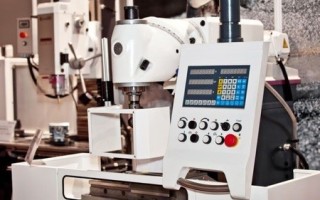Industrial storage represents an antithesis of NAND?s flashy world
May 18, 2017
Story

The technology media is abuzz with how flash memory technology is once more breaking the speed barriers with the advent of the ultra-dense 3D NAND chips. And 3D NAND flash is undoubtedly...
The technology media is abuzz with how flash memory technology is once more breaking the speed barriers with the advent of the ultra-dense 3D NAND chips. And 3D NAND flash is undoubtedly transforming the solid-state disk (SSD) market for enterprise storage in datacenter and cloud applications.
But how will this impact storage products for industrial applications? The short answer is, not much. For starters, a majority of embedded applications don’t require huge amounts of storage. Take, for example, data logging that’s performed in instrumentation environments.
A mere 4 Gbytes is generally sufficient for running a relatively small embedded operating system, the application code, and storage requirements for data logging. However, while performance and/or capacity are key attributes, they both take a back seat to reliability and ruggedness in embedded applications like data logging when it’s monitoring industrial equipment and its associated processes.
Data loggers perform tasks such as process monitoring, temperature profiling, fault identification, and process documentation in hostile factory environments. And mostly due to cost reasons, manufacturing systems don’t upgrade as quickly as consumer laptops or enterprise data servers.
What really matters in industrial-grade SSDs is longer product life cycle, typically from five to ten years, depending on the application. A number of factors contribute to ensuring that longer product lifecycle: rigorous qualification, thorough testing in harsh industrial environments, BOM lock, etc.

Applications like data logging demand highly reliable and robust storage device
The case for BOM lock
A locked BOM protects investments in both time and money through lengthy and rigorous qualification and testing procedures. This is done by ensuring that no changes are made in the NAND flash memory chip or the NAND flash controller and firmware algorithm that it runs.
While consumer- and enterprise-grade SSDs rely on the latest generation of NAND flash ICs to bring higher capacity and performance at a lower cost, it’s the other way around for industrial-grade storage products. A case in point is Cactus Technologies, a supplier of industrial-grade flash storage devices, which in many of its industrial flash products, uses 43-nm SLC NAND that was introduced a decade ago and provides a proven data retention of more than 10 years.
However, the advantages of a highly reliable flash memory chip like 43-nm SLC NAND are squandered if it accompanies a poorly designed controller chip or flash algorithm. Or changes are made in firmware code just to accommodate a specific request from a customer.
An SSD storage device is as reliable and consistent as its overall system design and architecture. The controller and its accompanying firmware algorithm play a crucial role in ensuring the reliability and operational stability in harsh industrial environments.
It’s worth mentioning that, unlike consumer- and enterprise-grade SSDs, controller chips for industrial storage applications are generally developed from grounds up. Moreover, they’re built identically while containing the same firmware for each build.
That’s why Cactus provides BOM control for all the components—NAND, controller, and firmware—on all of its rugged flash products. The industrial-grade flash cards from Cactus offer a locked BOM of more than five years. In the rare event that a BOM change is inevitable, the company issues a product change notification (PCN) to communicate changes in the flash storage design.




